
Hotel & Tourism in The Land Above the Clouds
by: Natasya Gracia & Regawa Paramasiddi
TORAJA HISTORY
Toraja comes from Bugis language “to riaja”, which means people of the uplands. Most of the population in Toraja is Christian. Others are Muslim and local animist beliefs known as Aluk To Dolo. The Indonesian government has recognised this animistic belief as a part of Hinduism. Torajans are renowned for their elaborate funeral rites and massive peaked-roof traditional houses known as “tongkonan”. Toraja funeral rites are usually attended by hundreds of people and lasting for several days. Methods of burial include coffins placed in caves, in carved stone tombs, hanging on cliffs, and inside trees.
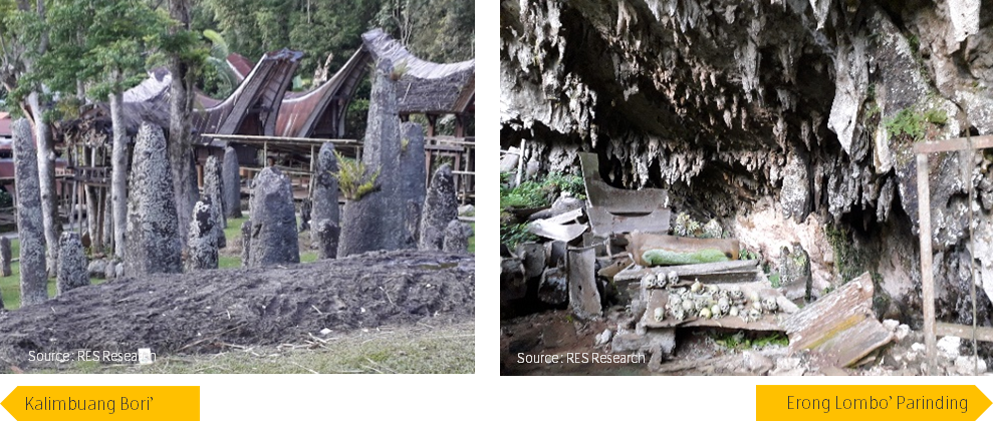
Torajans lived in autonomous villages before the 20th century, with animistic beliefs that were almost untouched by the outside world. By early 1900s, Dutch missionaries had come and spread Christianity. In 1970, Tana Toraja regency opened to the outside world and became the symbol of Indonesian Tourism. Tourism developers and anthropologists took advantage of this situation. Only since the 1990s the Torajans have undergone a transformation from traditional beliefs to Christian community, and start leaning on tourism sector that has continued to increase.
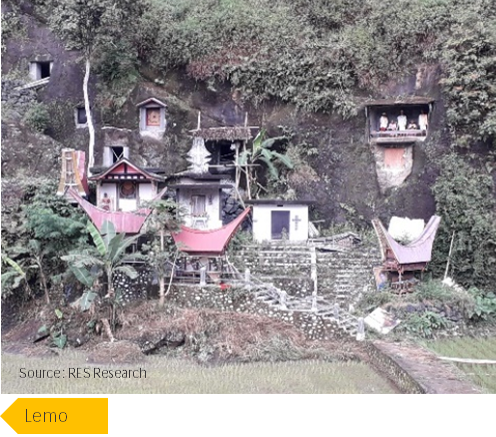
Since 2002, Toraja tourism suffered from the after-effect of Bali bombing. Based on Toraja Destination Management Organization, the number of Toraja tourists reached 300,000 people per year before 1998, with the majority coming from France, Spain, Germany and Netherlands. Meanwhile Toraja Central Bureau of Statistics stated that number of tourists in 2015 has decreased to 229.441 people, and was dominated by domestic tourists. This tourism condition can be seen from average hotel occupancy below 50% throughout the year, despite the fact that most hotels are full in peak season, when many funeral rites are being performed.
SUPPLY – TOURISM & HOTELS
Toraja area has been relying heavily on cultural tourism for decades. However, since the decline of foreign tourists, the local government, local communities and tourism developers began to introduce natural attractions to further promote travel activities in Toraja. Central government has established Toraja as one of the National Tourism Strategic Areas (Kawasan Strategis Pariwisata Nasional) in Indonesia. Currently there are more than 230 tourist attractions scattered in various villages within the two regencies of Tana Toraja and Toraja Utara.

Toraja natural tourist attractions mostly offer majestic landscapes such as cloud-covered valleys, vast paddy fields, waterfalls, mountains, and others. Some of them are :
• Batutumonga, Sesean Suloara, North Toraja
• Sarambu Assing Waterfall, Bittuang, Tana Toraja
• Talando Tallu Waterfall, Malimbong Balepe, Tana Toraja
• Statue of Jesus, Makale, Tana Toraja
• Ollon Tourist Area, Bonggakaradeng, Tana Toraja
• Pango-Pango Agro-tourism, Mengkendek, Tana Toraja
• Tilangga Nature Pool, Makale Utara, Tana Toraja
• Lolai Land above the Clouds, Kapalapitu, North Toraja
• To’tombi Land above the Clouds, Kapalapitu, North Toraja
Central Bureau of Statistics recorded a total of 23 hotels in Toraja in 2010. That number increased to 25 hotels in 2016. The addition of only 2 new hotels within 6 years shows the limited hotel demand growth in Toraja. Not only that, most hotels have operated for more than 20 years and managed by local managements. The types of hotel found in Toraja are guest house (Pia’s Poppies), budget hotel (Hotel Indra Toraja) and resort hotel (Toraja Misiliana Hotel). Toraja local government has a plan to develop Toraja Dream Plaza, which will consist of souvenirs center, culinary, star-rated hotel and cable car. This project will be located on Rantepao’s current souvenir market with land area of 1.4 ha. The pipeline hotel will consist of 3 floors and expected to operate in 2022.
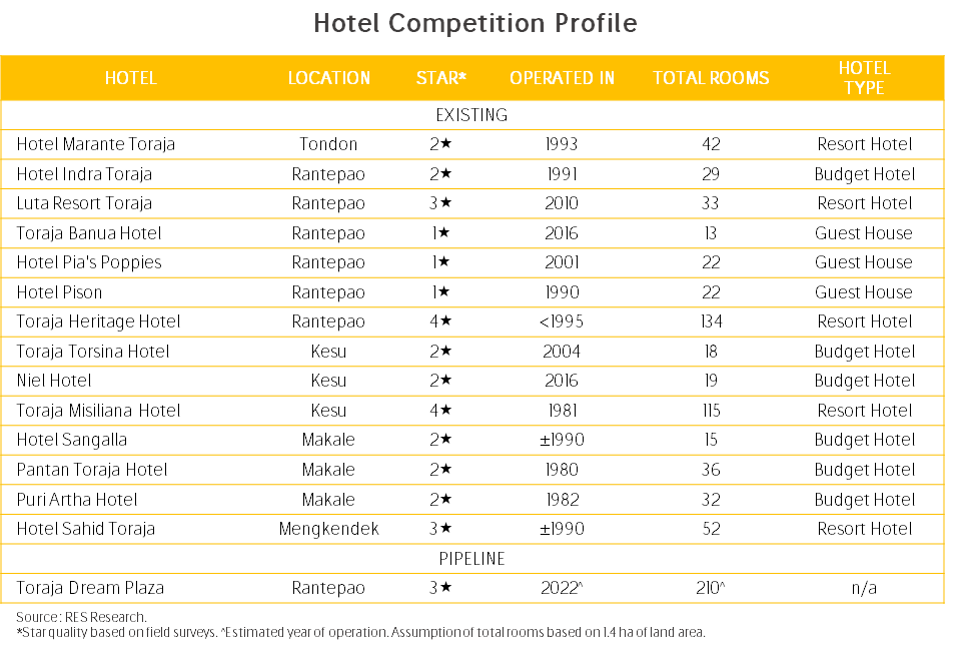
The existing hotels mostly offer standard room for their lowest hotel room type. Hotel room rate for standard room or similar type starts from Rp150,000 to Rp1,100,000 include breakfast, tax and services, in 2018.

DEMAND – TOURISM & HOTELS
Budget hotels in the competition area are targeting groups or individual guests (FIT travelers). Some hotels such as Pia’s Poppies, Toraja Heritage, Toraja Torsina, and Toraja Misiliana are dominated by foreign guests from Europe. Most hotel guests are coming from regencies (local governments), the government of South Sulawesi and Central government (room only, MICE only, or fullboard). Toraja Heritage and Toraja Misiliana as a 4 star hotels receive church activities regularly in their ballrooms. Overall, hotel guests in Toraja are leisure groups, couples, and individuals, also goverment and company for MICE.
In terms of tourist types, there are 3 target markets : domestic, foreign, and local. Each tourist market has different charactertistics. Most domestic tourists visit the area during Lebaran or Christmas holiday to visit many cultural and natural attractions in Toraja. Meanwhile, foreign visitors from France, Germany, Spain, and Netherlands normally come in from July to September to visit cultural attractions, coffee shops and souvenir shops. Locals (residents of Toraja area) will go to natural attractions, waterboom, agrotourism and city market in Palopo on weekends and holiday season.
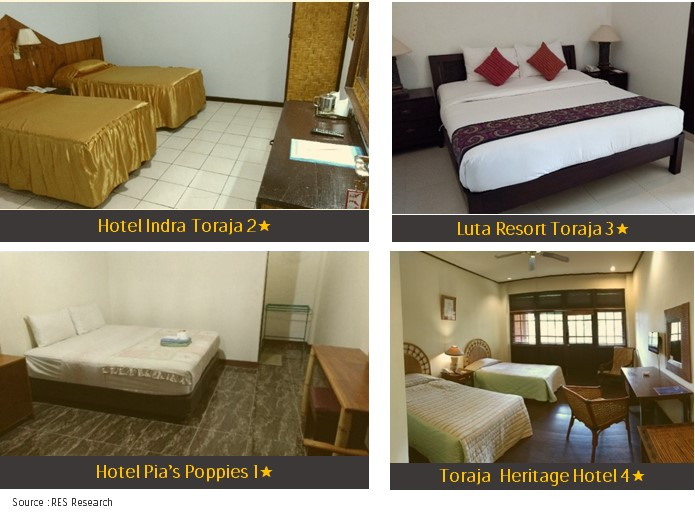
Research from Real Estate Strategy Indonesia estimated the average occupancy rate of hotels in the area to be 48% in 2017-2018. The high occupancy rates was found from July to September with average of 74%. The main peak season is when most funeral rites take place, mostly in August. Meanwhile, low season occurs during the first few months of the year with average occupancy of 25%. Based on the last data from Central Bureau of Statistics, average length of stay (ALOS) for foreign tourists is 3-4 nights, while for domestic tourists is 1-2 nights.
TOURISM POTENTIAL & CHALLENGES
With massive increase of domestic tourists in 2016 recorded by the Bureau of Statistics, the hospitality business in Toraja area should get further positive impacts. However, with the average occupancy rate of hotels observed under 50%, we can assume that the recorded increase of domestic tourists could have been people from the area around Toraja, and a number of Toraja-natives from urban cities returning home on holiday season, who happen to visit the many tourist attractions. Although we can continue to debate the Bureau of Statistic’s methodology in calculating the number of tourists in one year (Remember that Toraja at this time does not have an aiport in operation, so all tourists will come from land), Toraja region clearly needs more push, at least to improve the hotel occupancy rates.
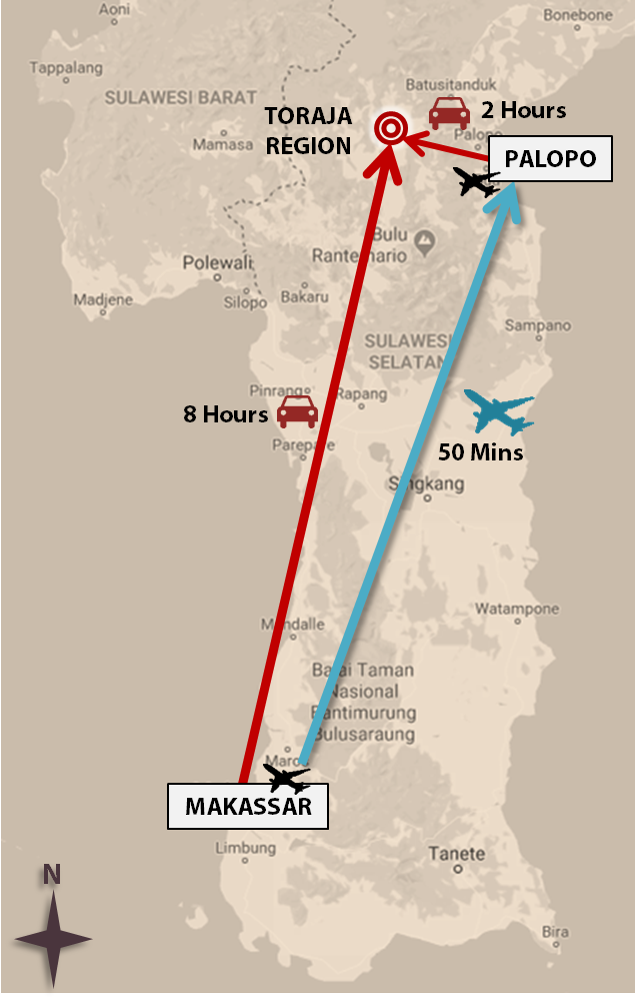
The challenge of tourism in Toraja remains to be the accessibility issues, as shown in the graphic above. The decades-long promoted cultural tourism of Toraja remains to be a niche market for the more sophisticated European tourists. The new destinations for domestic tourists have been successful in offering a different way to enjoy the Toraja region, broadening the potential target market that was previously too specific. New potentials have started to show, targeting mainly domestic tourists, local people, and mainly in younger age group. But it will still be a challenge, nonetheless, to promote the area beyond Makasar City.
Some key success for the rise of Toraja tourism are :
• Re-operation of Pongtiku Airport or Buntu Kunik Airport immediately with daily flight schedule and more seating capacity, preferably without relying on local government seat subsidy. This, however is a chicken and egg issue related to so many aspects from carriers to airport operators to promotions.
• Improvements of hotel accommodation quality and facilities, to attract more domestic market and Asian tourists.
• Natural attractions should be promoted further through social media and travel networks, as they are the key in opening new tourist markets to complement the already established, yet very niche market, of Toraja’s cultural tourism.